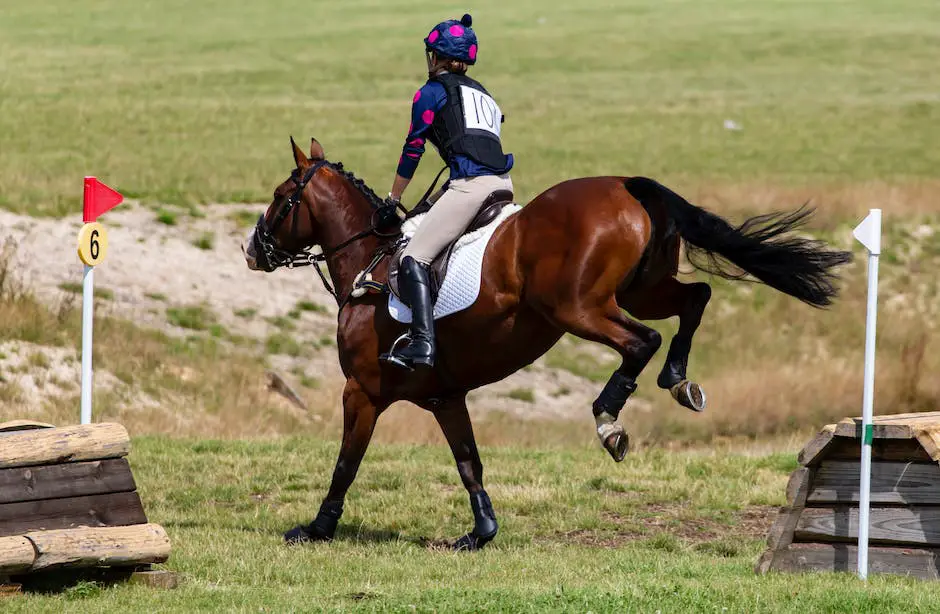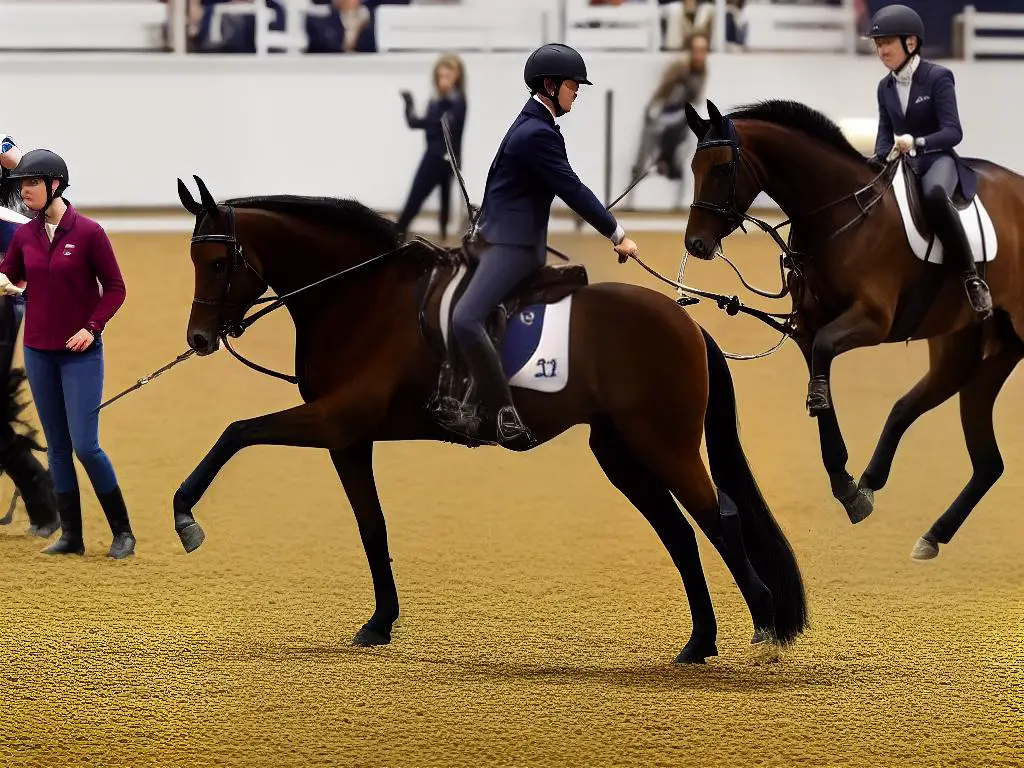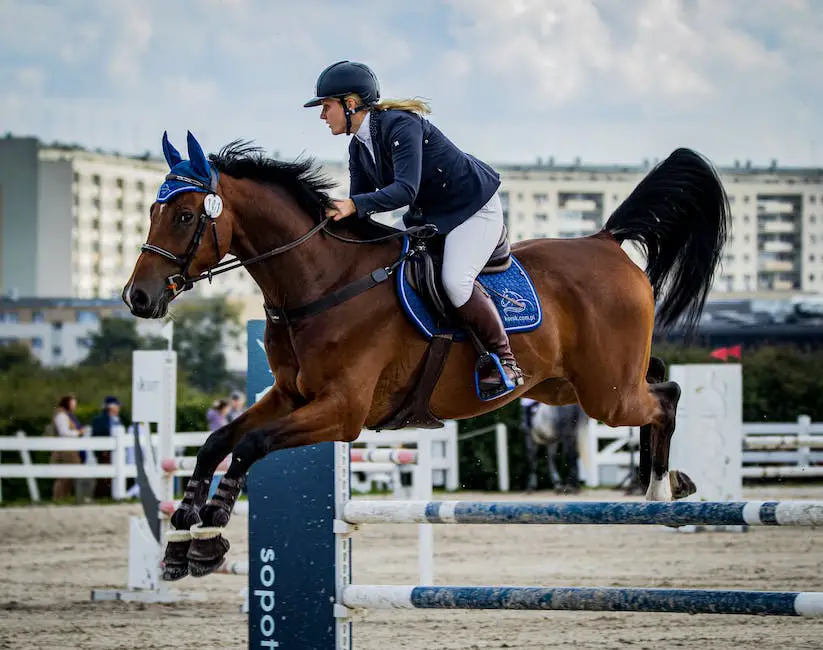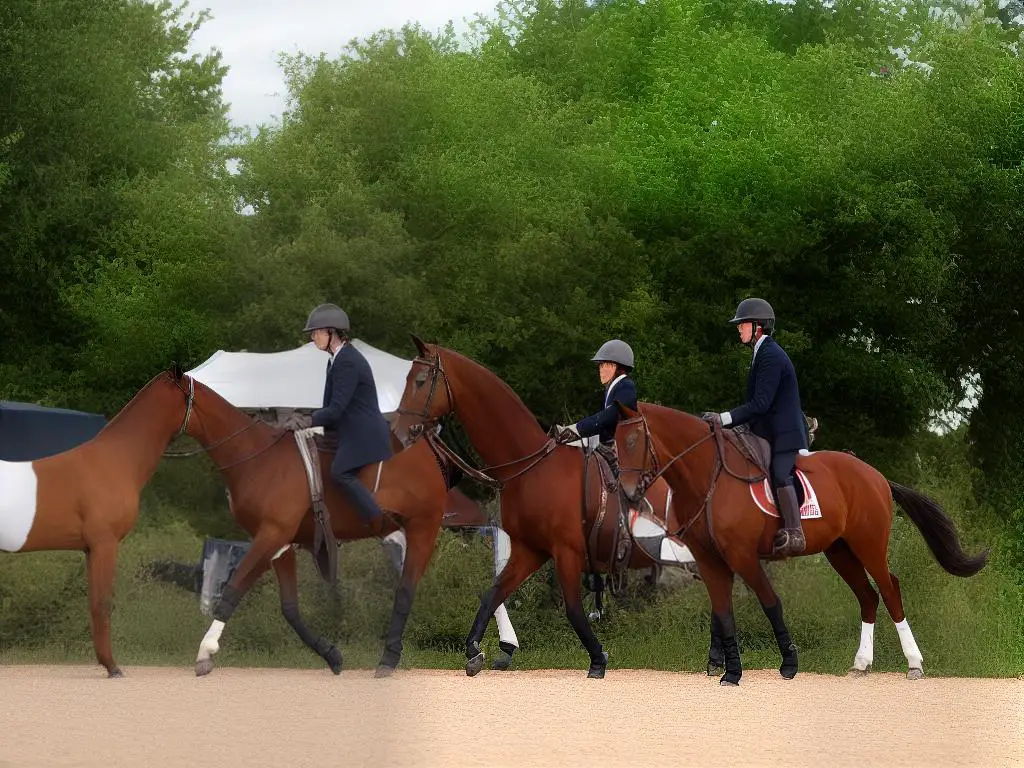Warmblood horses, admired for their grace and athleticism, play a significant role in various equestrian pursuits including dressage, show jumping, and eventing. This distinctive group of horses possesses a unique blend of characteristics that allows them to excel in these activities, yet these same traits mandate a thoughtful and considered approach to their training. Our discussion will journey through understanding warmblood horses’ temperament and health specifics, exploring fundamental training principles, and delving into advanced techniques. Furthermore, we will discuss how to navigate common training challenges and weave in essential health considerations to ensure the horses’ well-being during the training process.
Table of Contents (Horspedia)
Understanding Warmblood Horses
Understanding Warmblood Horses: Temperament and Character Traits
Warmblood horses are notably calm and easy-going. They are known for their stalwart bravery and are often seen as less spooky than other breeds. However, this does not mean they are lazy or lethargic. In fact, warmbloods are capable of great energy and strength. Their characteristically rational minds mean they are less prone to unmanageable bursts of energy or unexpected fright, making them excellent partners in various equestrian disciplines.
These horses are typically eager learners, displaying a high degree of intelligence, attentiveness, and curiosity which simplifies the training process. They often show a strong commitment to their human partners, demonstrating their inherently social nature. These character traits are beneficial for any horse owner, but they particularly lend themselves to first-time owners or less experienced equestrians who may be less equipped to manage a more fickle or high-strung temperament.
Understanding Warmblood Horses: General Health, Breed-Specific Characteristics, and Tailored Training
Warmblood horses are widely known for their agility, strength, and endurance. They are designed to excel in competitions such as dressage, showjumping, and eventing, while also being used as riding horses. These breed-specific characteristics make them highly versatile, and their strong, athletic bodies are designed to handle rigorous training.
Conversely, these characteristics also mean that warmblood horses may have specific health needs and vulnerabilities. For instance, they generally require more physical activity and organized training to keep them in top shape. The combination of high energy and strength, if not managed properly, can lead to injury. Therefore, training should be carefully planned and gradually increased in intensity to avoid stress-related health issues.
When training warmbloods, patience, and consistency are of the utmost importance. These horses respond positively to rewards-based training where good behaviour is recognized and reinforced. Repetition of exercises is also essential as it allows the horse to fully understand and remember the instructions given to them. In addition, warmbloods require mental stimulation to avoid boredom and to keep them engaged in training sessions.
Key Aspects to Consider during Training
The process of training warmblood horses is immensely affected by factors such as their temperament, peculiar traits, and overall health status. These inherent characteristics of the horse play a dominant role in shaping its learning and adaptability to training sessions. Despite warmbloods being known for their trainable nature, the approach to training can differ based on their varying temperaments and individual health conditions.
Crucially, one must remember that every horse, despite belonging to the same breed, is unique and may differ from standard breed characteristics. The training must be customized to address each horse’s particular needs, potential strengths, and areas of improvement. Building a strong bond with your horse by understanding its unique personality and behavioral patterns is recommended. This approach enables you to tailor your training methods to their individual learning style, leading to a more fruitful and positive training outcome.

Basic Training Principles for Warmblood Horses
Getting to Know Warmblood Horses
Warmbloods are essentially middle-weight horse breeds that trace their origins back to Europe, and they are admired for their versatility in various equestrian activities. As implied in their name, warmbloods are the offsprings of a crossbreeding between “cold-blooded” draft horses and “hot-blooded” Thoroughbreds and Arabians. This crossbreeding results in a breed that combines the strength, size, and serene nature of draft horses with the agility, endurance, and speed of lighter breeds. Understanding these unique traits is crucial when it comes to training warmblood horses effectively.
Starting Training with Warmblood Horses
Training for warmblood horses should begin at an early age, ideally when they are yearlings. The horse should be exposed to halter leading, bathing, grooming, hoof care, and simple hand commands during this early period. The purpose of early training is not to stress the horse with rigorous activities, but to socialize it, helping the horse to form positive associations with human interaction.
Regular Training Schedule
Warmbloods, like all breeds, benefit from a regular training schedule, which provides them with the routine and structure they need to learn effectively. Avoid overloading them with too much training in a single session. Remember, training is not only about physical exercise but also about mental development. Regular short training sessions are more beneficial in the long run; around 15-30 minutes per session for young horses, and about 1 hour for an adult horse is recommended.
Proper Use of Equipment
The appropriate use of equipment is crucial in the training of warmblood horses. The equipment should be comfortable and correctly fitted to prevent injuries and discomfort. Tack should be regularly maintained and checked for wear and tear. If in doubt, always seek expert advice on the fitting and use of specific equipment, such as saddles, bridles, bits, and harnesses, as incorrect usage can cause behavioral issues and disrupt training progresses.
Integrating Command Training
Command training is a significant part in warmblood training. Horses should be taught basic commands like “stop,” “go,” “left,” and “right.” Always use a consistent language and tone when giving these commands. Reinforce positive behavior by giving your horse a treat, a pat, or verbal praise, to encourage the repetition of these behaviors.
Physical Conditioning and Care
Keeping your Warmblood in good physical condition is as important as their training. Warmbloods are prone to certain health conditions, so proper care and a balanced diet are crucial. Regular veterinary checks are essential to ensure that any potential health issues are detected early.
Mental Well-being
Mental well-being is a crucial aspect of a warmblood’s training regime as well. Training should be a positive experience for both the horse and the trainer. If a horse appears stressed, anxious or fearful, it’s essential to identify and address the issues causing this behavior. Sometimes, changing a training method or spending some time doing activities the horse enjoys can improve their mental well-being.
The application of specific, well-proven principles can result in a highly trained, content, and physically fit warmblood horse.

Advanced Training Techniques
Progressive Training Strategies for Warmblood Horses
Warmblood horses are renowned for their tranquil temperament and nimble adaptability, allowing them to excel in an array of sporting events such as show jumping, dressage, and eventing. The proper education of these gifted breeds encompasses procedures like lunging, long reining, and refined schooling maneuvers.
Lunging
Lunging is a technique used to control a horse’s energy and activity. It involves the horse moving in a circle around the trainer, who holds a long line (lunge line) connected to the horse. This exercise helps in gauging a horse’s tendencies and behavior. It also assists in improving balance, rhythm, suppleness, and contact- all key elements in more sophisticated equestrian sports. Implementing lunging into your warmblood’s routine will require patience and consistency, as balancing on a circle can be challenging for them initially.
Long Reining
Long rein work or ground driving is another sophisticated training exercise. This technique gives the trainer control over the horse’s movements and allows them to direct the horse as though they were mounted, without the additional variable of a rider’s weight. It can help in fine-tuning a horse’s obedience and suppleness while refining their responses to rein aids. While long reining, particular emphasis must be placed on your consistency and sensitivity, as sudden or conflicting signals can cause confusion and tension in your horse.
Advanced Schooling Exercises
Advanced schooling exercises, such as dressage movements and grid work, play a crucial role in developing a horse’s physical strength and mental agility. Dressage is a great tool for enhancing a warmblood’s balance, suppleness, and obedience. It involves a series of prescribed movements performed in a specific sequence to test a horse’s athleticism and subconscious obedience to rider’s aids.
Grid work or pole work exercises help to increase a horse’s agility and accuracy. They involve setting up poles in a variety of distances and configurations to challenge a horse’s stride length and jumping ability.
Role of Consistency, Patience, and Sensitivity
Consistency in training a warmblood is key. Horses are creatures of habit and they learn best through repetition and reinforcement. Maintaining a consistent training routine and reinforcing positive behavior will help your horse understand what is expected of them.
Patience is fundamental in horse training. Warmbloods can be slow to mature both mentally and physically. Be prepared for periods of slow progress and occasional setbacks. Patience will ensure that you don’t hurry the training process, which can stress your horse and lead to resistance or confusion.
Sensitivity to your horse’s responses and well-being is paramount. Always adjust your techniques to your horse’s comfort level and ensure they are physically and psychologically ready for advanced training. Being sensitive to their needs will help build trust, ultimately improving the overall training effort.
By employing a combination of patience, consistent routines, and a sensitive approach, you can cultivate the innate talents of your warmblood horse to excel in any discipline you choose.

Dealing with Training Challenges
Appreciating the Intricacies of Training Warmblood Horses
Warmblood horses, renowned for their energetic prowess, unique intellect and flexible capabilities, are excellent contenders in different equestrian activities, such as dressage, eventing, or show jumping. However, these admirable traits also mean that training these majestic creatures can present its own set of challenges, which must be approached with care, understanding, and a thoughtful strategy.
Dealing with Resistance or Fear
Resistance or fear is one of the most common issues that can come up during training. Responding correctly to these behaviors is crucial. Training should never be a terrifying experience for any horse, and it’s particularly true for warmblood horses that are known for their sensitive nature.
For resistance, it is important to take a step back and consider why the horse may be refusing. It could be due to pain, misunderstanding, or fear. Consult with a veterinarian to rule out any underlying health or pain issues. If fear or misunderstanding seems to be the source of the resistance, making the training sessions more gradual and reassuring can help.
Avoid using force to overcome resistance. Instead, work with positive reinforcement and patience to build trust and understanding. Establishing a firm and trusting bond with your warmblood horse fosters an environment where the animal feels safe and secure to learn, perform, and excel.
Maintaining a Balanced Diet During Training
A horse’s diet plays a crucial role during training. A well-balanced diet will provide the horse with the energy it needs to perform and recuperate from intense training sessions. Similarly, proper hydration is vital and horses should have access to fresh drinking water at all times.
Work with an equine nutritionist to create a diet suitable for your warmblood. It should include sufficient amounts of proteins, vitamins, minerals, and fats. Hay should be a staple in a horse’s diet with the addition of grains and supplements as recommended by the equine nutritionist. Adequate feeding times should also be observed as it can affect their energy, performance, and recovery time.
Ensuring Mental and Physical Fitness
Mental and physical fitness is key to an effective training session. Warmblood horses are intelligent and curious animals; their minds need to be engaged as much as their bodies.
Incorporate mental stimulation into your training program to keep your horse alert and interested. This could include varying your training routines, including different types of exercises, or training at different times of the day.
For physical fitness, regular exercise is crucial. Even on non-training days, a warmblood horse should have enough exercise and time outdoors. Recuperation periods are equally important to allow the horse time to relax and regain its strength.
Regular health check-ups with an equine veterinarian are key to ensure that the horse is in good physical health and fit to continue with their training schedule.
In Conclusion
Training warmblood horses does present its own unique set of challenges, but these can be effectively overcome with a little patience and a deep understanding of their needs. The key to a successful training period is establishing a bond of trust with your horse, as this will pave the way for efficient learning and enjoyable experiences.

Health Considerations During Training
Health Considerations When Training Warmblood Horses
It’s important to consider various health-related elements during your warmblood horse’s training process. To sustain their optimal performance and avert any preventable injuries, familiarizing yourself with common health concerns, conducting periodic veterinary exams, and implementing preventative measures during training are essential.
Keeping an Eye on Typical Health Concerns during Training
Warmbloods can be prone to a range of health issues which can interfere with their training progress and overall performance. For example, joint issues are common due to their robust stature and sporty nature, and this could diminish their training productivity. Furthermore, respiratory problems might also impede performance, given horses heavily rely on their respiratory system during intense physical activities.
Overfeeding, hard surface work, or subsequent attacks of diseases like Cushing’s might lead to laminitis, a painful and potentially fatal condition for horses. Colic and gastrointestinal ulcers, often provoked by stressors associated with training, are another two frequent conditions observed in warmbloods.
Being capable of recognizing and understanding these health matters allows you to adjust your training plan to keep your horse healthy.
The Importance of Routine Veterinary Check-Ups
Regular veterinary examinations can be helpful in early detection of health issues and ensuring that precautionary measures are in place. Vets can conduct a comprehensive physical exam, blood tests, and employ other diagnostic tools to assess the health of the horse. Additionally, maintaining a good rapport with a veterinarian can offer valuable insight and suggestions on modifying training schedules or managing health problems.
Precautionary Measures to Avert Injuries During Training
There are several preventative measures to consider during training to reduce the risk of injuries, and implementing these can be as critical as the training itself. To start, a gradual and steady training pace is crucial in avoiding stress injuries caused by pushing a horse too hard or too quickly.
In addition, providing sufficient warm-up and cooldown periods during each session can aid the horse’s body in preparing for and recovering from the physical exertion, thereby minimizing the likelihood of injury.
Ensuring appropriate nutrition, hydration, and rest can also support the overall health of the horse, thus preventing diseases and allowing for quicker recovery from any stress or injuries.
Lastly, scrutinizing footing and environmental conditions can prevent unwarranted strain on your horse’s body. Ill-suited, uneven, or slippery footing can overtax joints, and raise the risk of falls or injuries.
Successful training of warmblood horses hinges on a blend of vigilant monitoring, proactive health care, and thoughtful training practices. By staying informed about their health and tailoring your training to their needs, you not only promote your horse’s well-being but also contribute to its growth and development.

Training a warmblood horse is an art as much as it is a science. Each horse is an individual requiring a customized approach that respects its temperament, promotes its health, and progressively develops its athleticism. Beyond mastering basic and advanced techniques, training also presents the challenge of maintaining the horse’s physical and mental wellness even in the face of difficulties. Yet, when navigated with patience, sensitivity, and knowledge, the process cultivates a remarkable partnership between horse and rider, underpinned by mutual trust and understanding. Ultimately, the journey of training a warmblood horse is one of growth and discovery for all involved, yielding rewards that echo far beyond the paddock.
